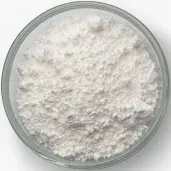
e904 food additive
Understanding E904 Food Additive Shellac and Its Uses
In the increasingly complex world of food production, additives play a crucial role in enhancing the shelf life, appearance, and overall quality of our food. Among these additives, E904, also known as shellac, has a unique place due to its origins and applications. This article delves into what E904 is, how it is made, its uses, and its safety profile.
What is E904?
E904 is a food additive derived from a natural resin secreted by the lac insect, particularly the species *Kerria lacca*. Shellac has been utilized for centuries, primarily in the production of varnishes and cosmetics, but over time, its application has expanded to include the food industry. It is commonly found as a glazing agent that provides a shiny, appealing finish to various food products.
How is Shellac Produced?
The production of shellac involves harvesting the resin from the lac insect, which lives on trees in tropical and subtropical regions, particularly in parts of India and Thailand. The resin is scraped from the bark of host trees and then processed to remove impurities. The resulting product is refined and purified to create the food-grade shellac, which is safe for consumption.
The process includes several steps 1. Harvesting The lac insects are allowed to thrive on specific trees, and once their resin is fully developed, it is collected. 2. Processing The raw shellac is subjected to heat, resulting in a material that can be dissolved and further purified for various applications. 3. Refinement The final product is filtered and dried, ensuring that it meets the safety and quality standards required for food use.
Applications of E904
e904 food additive

E904 is primarily used in the food industry as a glazing agent. Its main functions include - Enhancing Appearance Shellac gives a glossy finish to candies, confections, and fruits, making them visually appealing to consumers. - Preserving Freshness By forming a protective layer, shellac helps to reduce moisture loss in foods, which can extend shelf life. - Coating for Pharmaceuticals Beyond food, shellac is also employed in the coating of pharmaceutical tablets and supplements, providing a barrier against moisture and facilitating easier swallowing.
Common products that may contain E904 include shiny coatings on chocolates, candies, dried fruits, and certain types of nuts. Additionally, it is often used in organic and natural food products, as it is a natural ingredient.
Safety and Regulations
The safety of food additives is a primary concern for consumers, and E904 is no exception. The European Food Safety Authority (EFSA) and the U.S. Food and Drug Administration (FDA) have evaluated shellac's safety. According to their assessments, E904 is generally recognized as safe (GRAS) when used within specific limits.
That said, some individuals may have sensitivity or allergies to shellac, particularly those with allergies to shellfish or other related substances. As a result, food manufacturers are increasingly transparent about ingredient sourcing, and it is advisable for consumers to read labels carefully if they have dietary restrictions.
Conclusion
E904, or shellac, stands as an example of how natural substances can play a significant role in food production. With its ability to enhance appearance and preserve food, it demonstrates the balance between aesthetic appeal and functionality. While largely considered safe, awareness and understanding of food additives like shellac are essential for consumers striving to make informed dietary choices. Ultimately, the use of E904 reflects a broader trend in the food industry towards utilizing both natural and effective solutions for improving food quality and presentation.
-
Understanding Synthetic Rubber OptionsNewsApr.27,2025
-
Trichloroisocyanuric Acid: Essential for Clean and Safe WaterNewsApr.27,2025
-
Sodium Dichloroisocyanurate: Key to Safe Water TreatmentNewsApr.27,2025
-
Sodium Acid Pyrophosphate: Essential in Modern Food ProcessingNewsApr.27,2025
-
Essential Water Treatment ChemicalsNewsApr.27,2025
-
Denatured Alcohol and Its Industrial UsesNewsApr.27,2025
-
The Versatile Uses of Sodium BicarbonateNewsApr.24,2025
Hebei Tenger Chemical Technology Co., Ltd. focuses on the chemical industry and is committed to the export service of chemical raw materials.
-

view more DiethanolisopropanolamineIn the ever-growing field of chemical solutions, diethanolisopropanolamine (DEIPA) stands out as a versatile and important compound. Due to its unique chemical structure and properties, DEIPA is of interest to various industries including construction, personal care, and agriculture. -

view more TriisopropanolamineTriisopropanolamine (TIPA) alkanol amine substance, is a kind of alcohol amine compound with amino and alcohol hydroxyl, and because of its molecules contains both amino and hydroxyl. -

view more Tetramethyl Thiuram DisulfideTetramethyl thiuram disulfide, also known as TMTD, is a white to light-yellow powder with a distinct sulfur-like odor. It is soluble in organic solvents such as benzene, acetone, and ethyl acetate, making it highly versatile for use in different formulations. TMTD is known for its excellent vulcanization acceleration properties, which makes it a key ingredient in the production of rubber products. Additionally, it acts as an effective fungicide and bactericide, making it valuable in agricultural applications. Its high purity and stability ensure consistent performance, making it a preferred choice for manufacturers across various industries.











